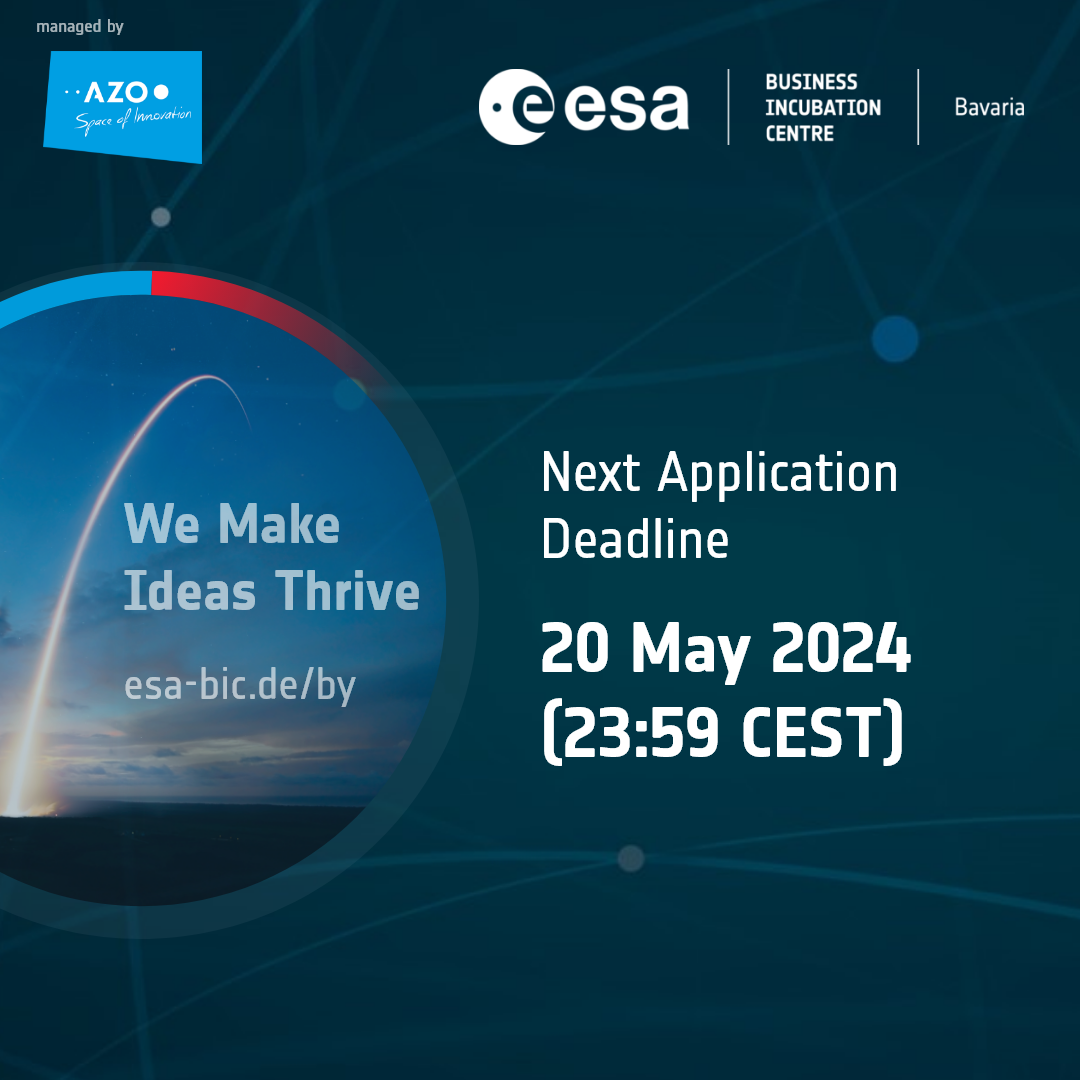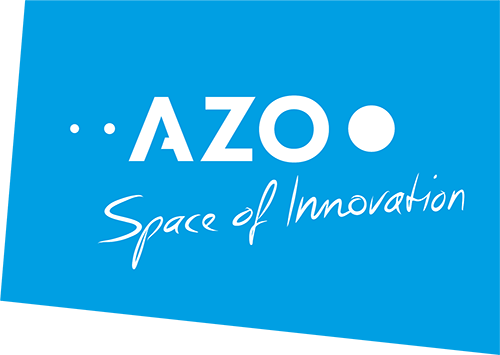The ESA BIC Bavaria startup Blackwave is specialised in the compression molding of carbon fibre reinforced thermosets in the Carbon-SMC process. With this process, Blackwave realises highly complex components which cannot be produced in conventional carbon fibre manufacturing processes. The low cycle times and the high degree of automation provide reproducible results and guarantee a very economical production of lightweight components for high-performance applications.
Blackwave founder Bastian Behrens is interviewed by Regine Heue, Head of Marketing & Communications at ESA BIC Bavaria’s managing company AZO.
RH: Please give us a sneak peek of your product and the team behind it.
BB: Blackwave provides an automated process for the cost-efficient production of complex and highly functional carbon fibre components. The technology is called Carbon Fibre Sheet Moulding Compound (C-SMC). C-SMC is a compression moulding process of chopped carbon fibres and a thermoset plastic matrix. In this way, Blackwave solves many problems of conventional carbon fibre reinforced plastic (CFRP) manufacturing methods. Furthermore, we are able to replace metallic parts in complex shaped applications with an improved weight to performance ratio.
We are a fast-growing and agile company consisting of passionate engineers and problem solvers. What unites us is our love for CFRP, as well as our in-depth experience in carbon fibre production technologies acquired in various established companies and research institutes. We are convinced that the importance of C-SMC technology will grow significantly in the years to come. While knowing the strengths and weaknesses of the competition, we are working hard to commercialise our technology and shape the future of lightweight design.
RH: What has been your company’s biggest challenge so far?
BB: The biggest challenge so far was to convince our customers that we are able to reliably deliver volume production parts. Our customer quickly trusted us with prototypes and small lot sizes. But we had several discussions as to whether we can produce our high-performance components with a constant, high level of quality not only in small but large quantities (>1000/a) and deliver them on time. We were very enthusiastic about the opportunity presented to us by our first series automotive project with Porsche as the final customer. We were able to demonstrate that we are more than capable of delivering high volumes in time: within the last 6 months, we have already produced over 6,000 components and didn’t receive a single quality complaint. This makes us very proud.
RH: Can you explain the three main ingredients of your recipe for success?
BB: Our main ingredients are:
- Cross selling potential – Vast range of potential applications and customers
- First to market – Successful entry to a greenfield market
- Know-how – Deep understanding of material and process
RH: What did you expect from ESA BIC Bavaria? How did the initiative and its network help you to kick-start your business case?
BB: We were looking for contacts in the aerospace industry and support with formal topics, and that is exactly what we received. Through ESA BIC, we were able to establish contacts with DLR and ESA and discuss possible high-end applications of our technology with experts. This resulted in a direct project with ESA, in which we were able to investigate the manufacture of satellite components using our technology. Since all involved participants have recognised the potential of the technology for space applications, we are already planning a follow-up activity with the goal of proving the capabilities of the materials in a relevant environment.
In addition, we are already in discussions with several companies that want to use our technology for their space applications. ESA-BIC has thus laid the foundation for all our space activities.
RH: How did Airbus support you?
Since we are located right next to Airbus Defence and Space in Taufkirchen, we have many links. We do not only in cooperate in a standard customer-supplier-relationship, but we are partners in many ways. Together we created the Campus Garage, a ‘maker-space’ for the Airbus neighbourhood. This way we and other campus partners have easy and uncomplicated access to high-tech machinery and testing facilities, which helps everyone involved to build up prototypes extremely quickly.
Another advantage is that we were able to start several fantastic development projects thanks to our contact with Airbus. In one of those projects, we deal with the structural challenges of power storage systems for electric powered aviation and the campus eco system is a strong catalyst to speed up the project.
RH: Let’s reach for the stars – what is going to happen in Blackwave’s future?
Our long-term vision is to be the leading supplier for complex carbon fibre applications across industries. But we have some more tangible and quantifiable goals:
We want one of our components to be flown on an airplane (and we are not talking about hand luggage) before 2021 (5 years after founding) and we want to see one of our parts in earth orbit before 2026. Right now, we are pretty optimistic about accomplishing both of our goals. Fingers crossed!
Did you enjoy this interview with the outstanding innovator? Stay tuned for upcoming interviews with ESA BIC Bavaria innovators on our AZO Blog.






